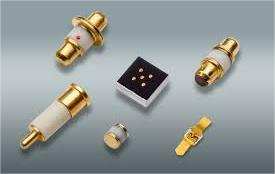
In the field of electronic components, detector diodes play a unique and crucial role. As a type of diode specifically designed for signal demodulation, they can extract useful low-frequency signals from high-frequency or intermediate-frequency radio signals. This makes them core components in radios, televisions, communication devices, and other receiving equipment. Without detector diodes, everyday devices such as radios, mobile phones, and wireless network equipment would not function properly or transmit information. This article provides a systematic and professional introduction to detector diodes, covering their definition, working principle, types, characteristics and advantages, and applications.
Catalog
IV. Characteristics and Advantages
I. What is a Detector Diode?
A detector diode is a semiconductor device specifically designed for signal demodulation. Compared to other diodes, it has unique operating characteristics that make it perform exceptionally well in high-frequency applications. Structurally, most detector diodes are point-contact diodes, where a fine metal wire touches the surface of a semiconductor to form a PN junction. This design results in very low junction capacitance, allowing for high-frequency operation, making it ideal for use in high-frequency circuits. Detector diodes are usually made of germanium, as germanium diodes have a low forward voltage drop (around 0.2–0.3 V), which improves detection efficiency for small signals.
II. Working Principle
The core function of a detector diode relies on the unidirectional conductivity and non-linear characteristics of the PN junction. When a forward voltage is applied across the diode, its resistance is low, allowing current to flow; when a reverse voltage is applied, its resistance is high, and the diode is effectively off. This unidirectional conduction enables the conversion of alternating current (AC) signals into direct current (DC).
In detection applications, a high-frequency amplitude-modulated (AM) signal is applied to the detector diode. During the positive half-cycle of the signal, the diode conducts; during the negative half-cycle, the diode is off. As a result, the output current takes the form of pulses containing the information of the original modulated signal. With proper filtering, the original audio or video signal can be recovered from these pulses.
III. Main Types
In the electronic components industry, detector diodes can be categorized based on their structure, application, and frequency range:
· Schottky Diode: Uses a metal-semiconductor structure, featuring low forward voltage drop, fast recovery, and low parasitic capacitance. Widely used in RF and microwave detection circuits.
· Tunnel Diode or Backward Diode: Suitable for extremely high-frequency, microwave, or even millimeter-wave applications. In addition to detection, it can also provide fast response power measurement.
· Planar-Doped Barrier Diode: Designed specifically for RF power detection, suitable for wide bandwidths and high-frequency ranges. Commonly used in the front end of receivers or measurement instruments.
· Standard Crystal Diodes (e.g., germanium or silicon diodes) for envelope detection: While not as efficient as specialized RF detector diodes, they are still used in low-frequency, low-cost envelope detection applications, such as AM demodulation.
IV. Characteristics and Advantages
Detector diodes have multiple characteristics and advantages that make them irreplaceable in signal demodulation:
· Low junction capacitance and high operating frequency: They can handle signals up to hundreds of MHz or even GHz, where ordinary rectifier diodes fail.
· Low forward voltage drop in germanium diodes (≈0.2–0.3 V): This allows detection of very weak signals, which is crucial for receiving distant or weak radio transmissions, enhancing receiver sensitivity.
· Excellent switching performance and fast response: This allows their use not only in signal demodulation but also in high-speed switching and logic circuits.
· Simple point-contact structure and low cost: Suitable for small-signal detection, rectification, modulation, mixing, and limiting functions.
V. Applications
· RF Power Detection and Measurement: Detector diodes are key components for precise power measurement and monitoring in wireless communication, radar, and microwave systems. They convert high-frequency signals into DC output for reading by instruments or control circuits.
· Envelope Detection / Demodulation Circuits: In AM communication systems, detector diodes are used for envelope detection, extracting audio signals from modulated carriers.
· Automatic Gain Control (AGC) and Monitoring Systems: By monitoring output power or signal amplitude through the diode's output voltage, AGC or power limiting can be achieved in transmitters or amplifiers.
· Test Instruments and Measurement Equipment: Power meters, spectrum analyzers, and RF detectors often use detector diodes as front-end detection devices due to their fast response, low cost, and wide frequency range.
VI. Conclusion
From traditional AM radios to modern wireless communication systems, detector diodes have always been core components for signal reception and demodulation. As communication technologies advance to higher frequencies, the performance requirements for detector diodes continue to rise. In the future, the introduction of new materials and processes will allow detector diodes to maintain their core functionality while achieving higher frequencies, lower losses, and smaller sizes, ensuring they remain indispensable in the electronic components industry.




